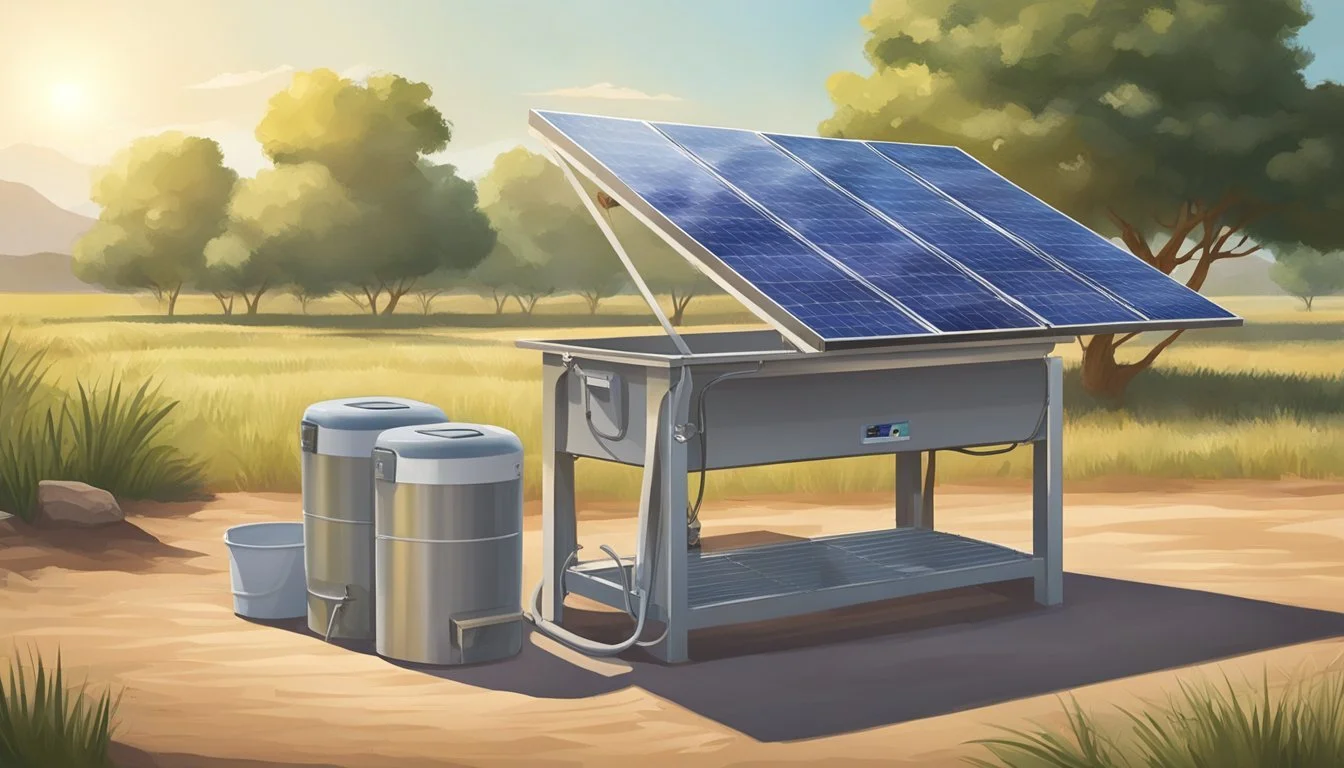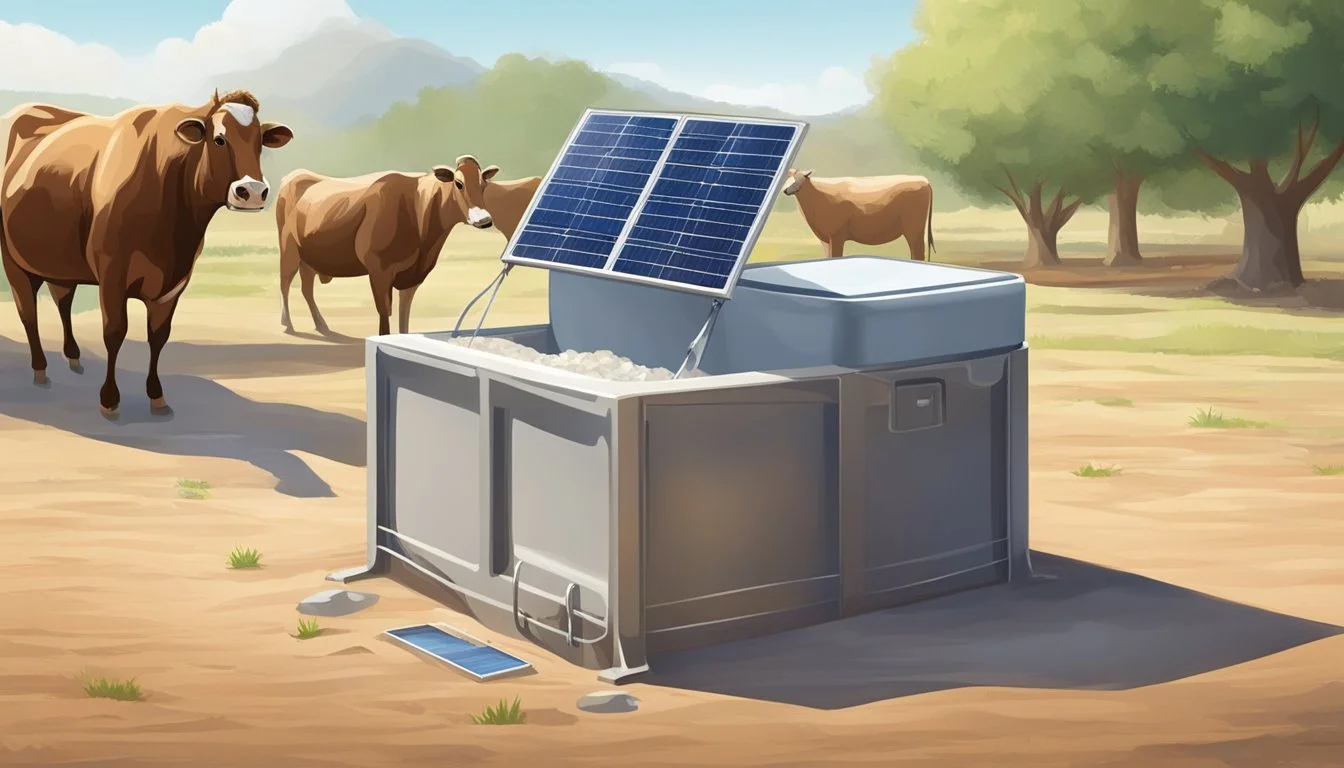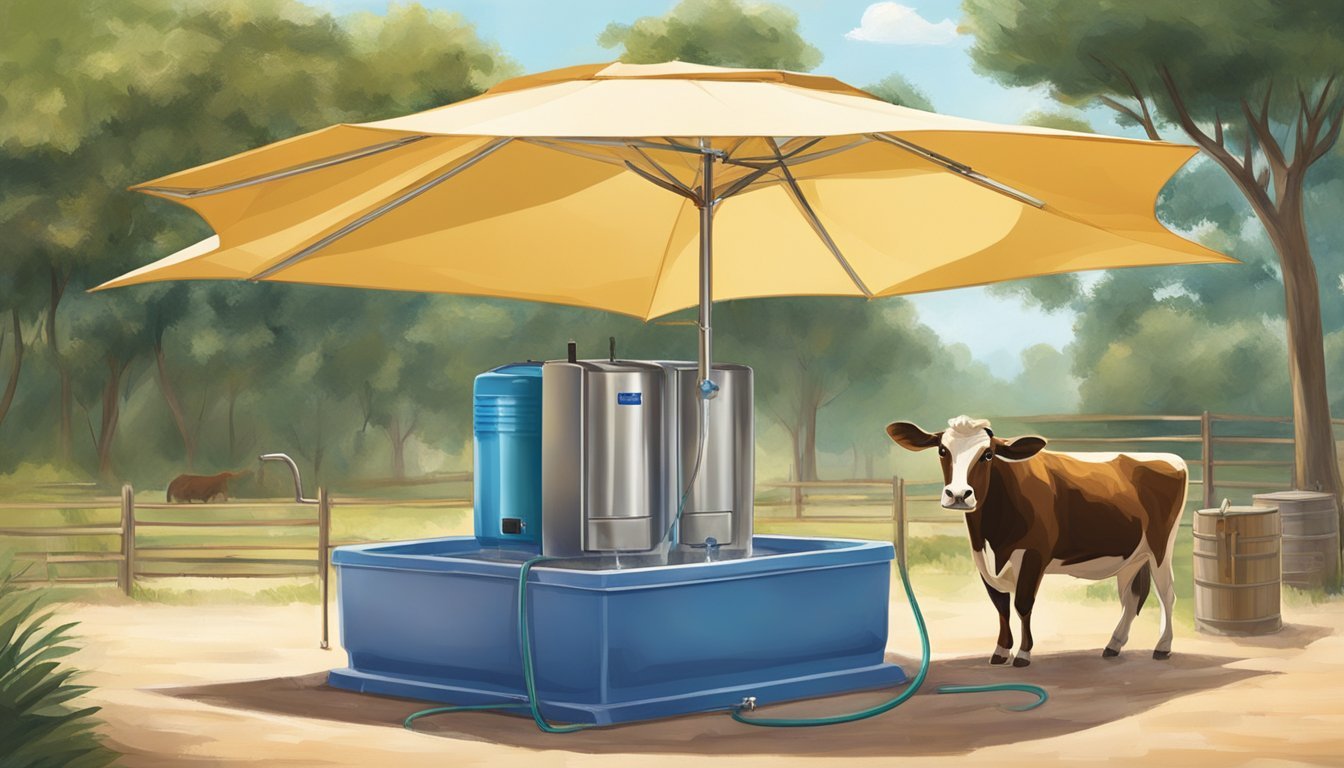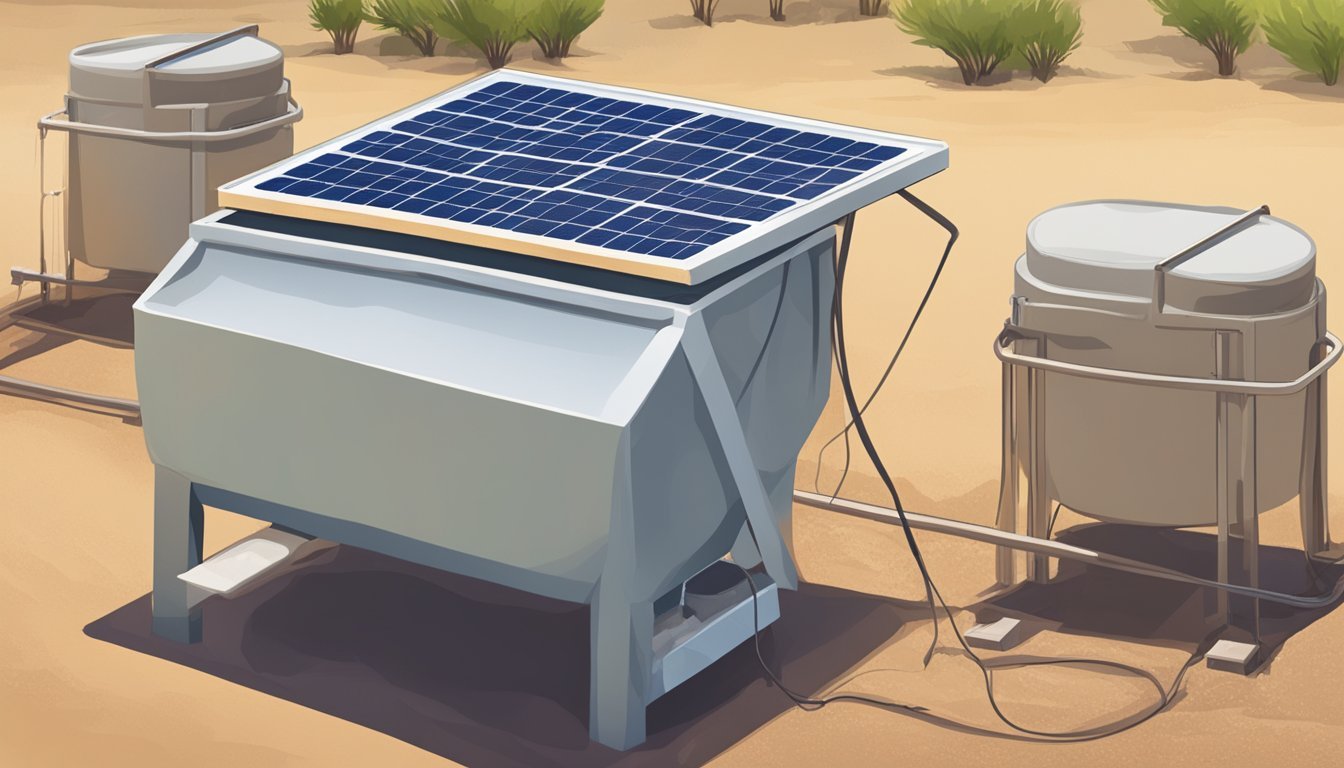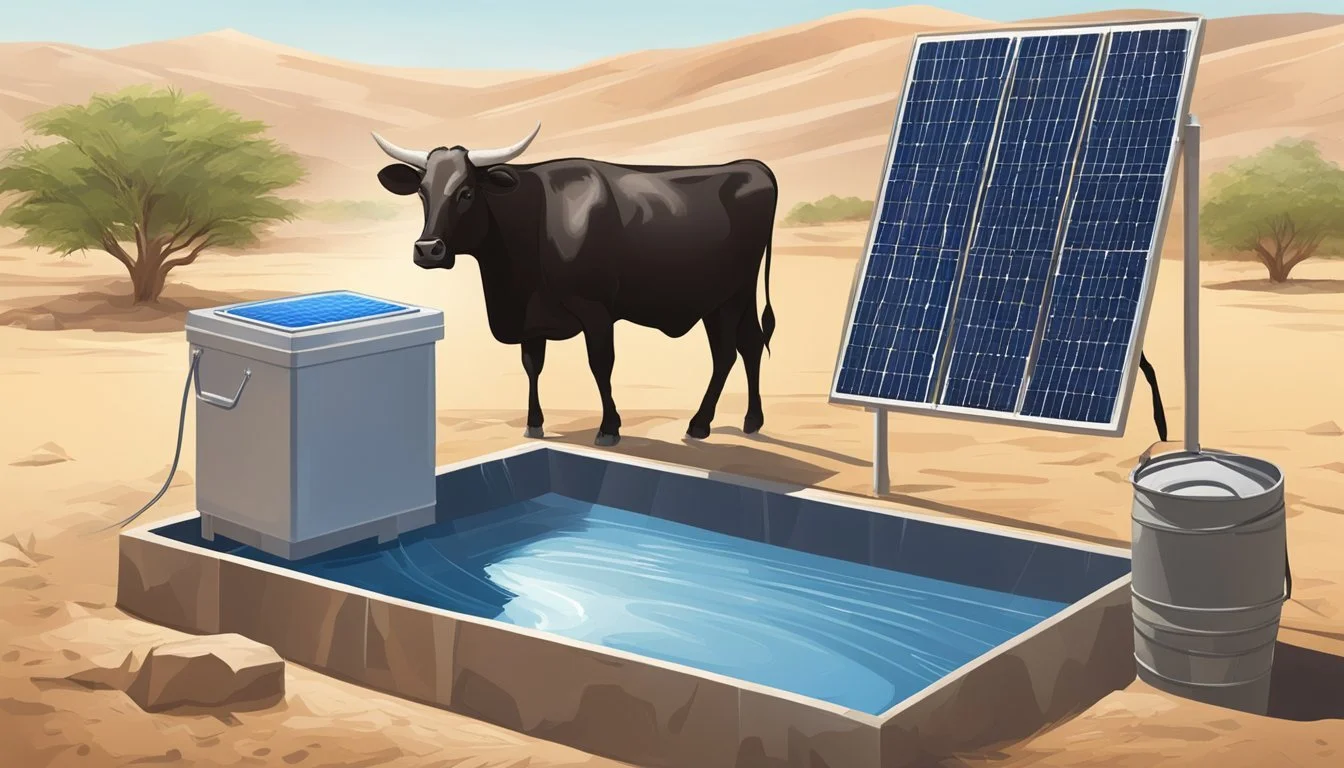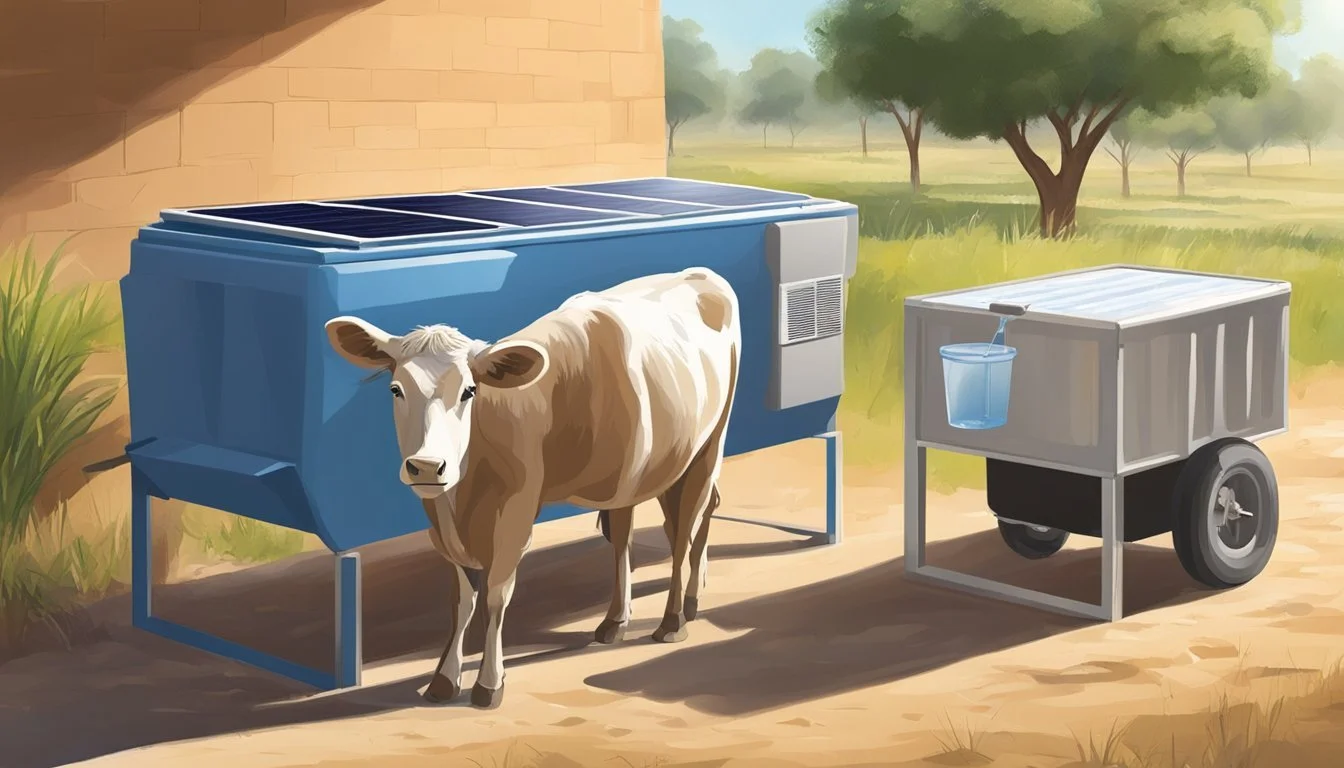How to Keep Livestock Water Cool in Hot Climates
Solar-Powered Solutions Unveiled
Maintaining adequate water temperature is crucial for livestock health, particularly in hot climates where dehydration and heat stress pose significant risks. A solar-powered cooler presents an innovative solution to this challenge, harnessing the sun’s energy, a plentiful resource in such regions, to keep water at a safe and refreshing temperature for animals. This sustainable approach not only protects livestock welfare but also offers farmers an eco-friendly and cost-effective method for managing their water supplies.
The technology behind solar-powered cooling systems is both simple and effective. Solar panels capture energy from the sun, which is then used to power a cooling mechanism within the water tank, reducing the water's temperature. These coolers often come with the added benefit of not requiring an external power source, making them ideal for remote or off-grid farming operations. By utilizing natural resources, these systems reduce reliance on electricity and minimize the ecological footprint of agricultural practices.
Understanding Solar Power for Livestock Water
Implementing solar power for livestock water cooling systems enables ranchers to leverage renewable energy to maintain optimal water temperature for their animals. This section unveils the fundamental principles of solar energy and the distinct advantages of adopting solar-powered cooling systems for livestock.
Basics of Solar Energy
Solar panels are the critical components in harvesting solar energy. They consist of photovoltaic cells that convert sunlight directly into electricity. The energy captured by the solar panels is then used to power cooling mechanisms within the solar water tanks, effectively reducing water temperature even in hot climates. This process ensures that the livestock has access to cool water throughout the day.
Benefits of Solar-Powered Cooling Systems
A solar-powered stock tank cooler offers a host of benefits over conventional cooling methods. Primarily, these systems utilize renewable solar energy, which is both eco-friendly and cost-effective in the long term. They increase energy efficiency by directly using the sun's energy, thus bypassing the need for electrical power from the grid. Moreover, by maintaining a consistent water temperature, solar water tank heaters assure the welfare of livestock, which can lead to better health and increased productivity. The solar collector plays a vital role, as it not only absorbs solar energy but also ensures that the heat is dispersed effectively to prevent water from warming up excessively.
Designing a Solar-Powered Water Cooler
The creation of a solar-powered water cooler for livestock involves selecting appropriate solar panels, constructing an efficient water tank with adequate thermal mass, ensuring proper insulation, and establishing an effective water circulation system.
Choosing the Right Solar Panels
Solar panels are critical in harnessing sunlight to power the cooler. It's important to choose panels with sufficient wattage to meet the energy demands of the water pumping and cooling system. The size and number of panels required will depend on the geographic location and expected sunlight hours. One must also consider the durability and efficiency of the panels to ensure that they provide consistent energy output over time.
Water Tank and Thermal Mass
The water tank serves as the primary storage for the cooled water, and its construction is pivotal. A tank with a large thermal mass, such as one made from concrete or dense plastic, will help maintain consistent water temperatures. To further regulate water temperature, one could add thermal mass inside the tank—for example, by using bottles filled with saltwater, which has a higher heat capacity than fresh water and can absorb excess heat during the day.
Insulation Strategies
Proper insulation of the water tank is necessary to minimize thermal loss and maintain cool temperatures. Insulation materials like polystyrene or insulation board can be used to line the tank. For additional thermal protection, the tank could be placed below ground level or covered with polycarbonate glazing to shield from direct sunlight while still allowing light to pass through for solar panel operation.
Water Circulation Systems
Efficient water circulation is key to distributing the cooling effect throughout the tank. One can use plastic tubing for a network that allows water to flow and pass heat readily. With a solar-powered pump, water can constantly circulate between the tank and the troughs, which helps to dissipate heat and keep the water at a cooler temperature. This also prevents stagnation and discourages the growth of algae.
By meticulously evaluating each component's role and performance in the system, one can effectively design a solar-powered water cooler capable of maintaining a consistent supply of cool water even in hot climates.
Installation and Maintenance
Successful operation of a solar-powered cooler for livestock water hinges on proper installation and diligent maintenance. These steps ensure the system functions efficiently, with minimal maintenance requirements extending its longevity.
Setting Up the Solar-Powered Cooler
One begins the installation by choosing a location that receives maximum sunlight throughout the day, as the efficiency of the solar cooler depends heavily on solar exposure. The solar panel should be positioned at an angle that captures the most sunlight, often facing south in the Northern Hemisphere. It's essential to confirm that the solar panels remain unobstructed by shade or debris.
Upon securing the solar panels, connect them to the cooler unit, typically positioned adjacent to the livestock water tank. Manufacturers often provide detailed manuals to guide through this process, ensuring ease of installation. It's crucial to check all electrical connections for proper insulation and to set up any necessary protective enclosures as directed.
Installation Checklist:
Select a location with full sun exposure.
Angle the solar panel appropriately.
Connect solar panel to the cooler unit.
Follow manufacturer's installation guide.
Inspect electrical connections.
Install protective enclosures if required.
Routine Maintenance Tasks
To maintain the cooler's efficiency, a set of routine maintenance tasks must be performed:
Weekly:
Inspect solar panels for dirt or debris.
Check water levels and adjust cooler settings as necessary.
Verify all electrical connections are intact.
Monthly:
Clean the exterior surfaces of the solar panel to maintain optimal energy absorption.
Review the integrity of all components, including hoses and seals, replacing parts as needed.
Seasonally:
Prepare the system for extreme weather conditions; this may mean winterizing in colder climates or providing extra shade in hotter regions.
Test the entire system to identify any irregularities or potential issues.
Proper maintenance needs to be prioritized as it has a definitive impact on both the initial cost and the long-term savings associated with the system. Adhering to a consistent maintenance schedule ultimately contributes to the cooler's long-term efficiency and durability, with an emphasis on low maintenance efforts leading to sustained performance.
Cost-Effectiveness and Sustainability
Investing in a solar-powered cooler for livestock water not only contributes to long-term cost savings but also promotes sustainability by reducing energy consumption and carbon footprint.
Evaluating Cost Savings
Initial Investment: A solar-powered cooler involves upfront costs, which cover solar panels, batteries, and the cooling system. However, these are offset by the long-term savings in utility bills, as it eliminates the use of electricity from non-renewable sources.
Government Incentives: Farmers may benefit from tax deductions, rebates, or other incentives to reduce the initial setup cost.
Reduced Energy Bills: Solar power directly translates to fewer monthly expenses on energy, enhancing cost-effectiveness.
Environmental Advantages
Emissions: Solar-powered coolers substantially lower greenhouse gas emissions compared to traditional electric coolers. This eco-friendly approach aligns with strategies to combat climate change.
Sustainability: The use of renewable energy sources makes the cooling system sustainable, contributing to a smaller carbon footprint.
Eco-Friendly Operation: These coolers operate without releasing pollutants, embodying an environmentally friendly solution.
By integrating solar-powered coolers, farmers can not only see a reduction in their operational costs but also contribute positively to the environment, setting a standard for responsible and economically viable farming practices.
Safety and Reliability
When incorporating a solar-powered cooler to maintain water temperature for livestock, safety and reliability are paramount. These devices must operate consistently under harsh conditions and be designed to prevent any operational hazards.
Ensuring Safe Operation
Solar-powered coolers must be designed and constructed with safety as a priority. They should have secure, insulated wiring to prevent electrical hazards and be made with durable materials to withstand the outdoor environment. An integral part of safe operation is the inclusion of a thermostat, which ensures water remains at a safe temperature for livestock consumption. Additionally, remote monitoring systems can provide real-time alerts to detect any functional anomalies before they become safety issues, allowing for timely maintenance and repairs.
Key points for ensuring safe operation:
Insulated and secure wiring
Thermostat integration for temperature regulation
Real-time remote monitoring systems
Dependability of Solar Cooling Systems
Reliability hinges on the cooler’s ability to perform consistently and effectively, even in off-grid settings where traditional power is not available. Solar-powered coolers often contain fewer moving parts, which can reduce the risk of mechanical failures. In terms of reliable performance, these coolers are designed to harness ample solar energy during the day, storing excess power in batteries to ensure uninterrupted operation. The system's off-grid capability is crucial in remote, rural areas where livestock are typically raised, providing dependable service without reliance on an external power grid.
Key points for dependability:
Fewer moving parts to minimize mechanical failures
Excess power storage for consistent operation
Off-grid capability suitable for remote locations
Adapting to Different Climates and Needs
Adapting livestock water cooling solutions to various climates is crucial for ensuring the health and hydration of animals. Solar-powered coolers must be versatile to handle the unique challenges of each environment.
Solar Solutions for Cold Weather
Solar-powered water coolers for livestock can be equally effective in colder climates, where preventing water from freezing is as important as cooling it in hot climates. Solar stock tank heaters are a practical innovation, with a solar panel that powers a heating element to maintain water at a temperature above freezing. The heat loss rate is mitigated by using insulation around the water reservoir. A system like this often has a long lifespan, making it a practical choice for farms with animals such as horses and chickens, which require consistent access to liquid water.
Scaling for Various Livestock and Farm Sizes
Scalability is a significant factor to consider when deploying solar-powered coolers. A farm's water cooling needs can be significantly different depending on whether it houses fish in aquaculture settings or larger animals such as cattle. When scaling for various livestock and farm sizes, the system must be able to adapt in capacity, from individual tanks to larger reservoirs. Farmers must weigh the budget and the intended use to make a practical choice. Innovations in solar technology and tank design can cater to diverse needs, ensuring a scalable and adaptive approach to maintaining optimal water temperatures.
Livestock Health and Productivity
Maintaining optimal temperatures for livestock water is critical for ensuring animal health and sustaining farm productivity in hot climates. Innovative solar-powered coolers for livestock watering tanks are making this easier, providing a consistent supply of cool water even during heatwaves.
Preventing Dehydration in Animals
Dehydration in livestock can have severe health consequences, including reduced immune function and heat stroke. To prevent dehydration, solar-powered coolers can be implemented to maintain water at cooler temperatures, making it more palatable and encouraging animals to drink adequately. Key strategies include:
Regular Monitoring: Check water levels and temperatures frequently to ensure they remain within safe ranges for consumption.
Tank Insulation: Use insulating materials around galvanized or plastic stock tanks to prevent rapid heating from the sun.
Impact on Farm Productivity
The productivity of a farm is closely tied to the health of its livestock. Hydrated animals are more likely to maintain growth, reproduction, and milk production rates, which directly translate to a farmer's bottom line. Specific impacts include:
Growth Rates: Animals with ample access to cool water exhibit better weight gain and overall growth.
Milk Production: Dairy cattle with cooler water have been shown to maintain higher milk yields, as stress from heat can decrease lactation.
Support and Resources
In the realm of solar-powered coolers for livestock water, support and resources hinge on expertise and financial aid. These fundamental components ensure that those in off-grid or remote locations can achieve energy independence while mitigating environmental impact.
Accessing Expert Advice
To effectively implement a solar-powered cooling system, one should seek out specialists in the field. Agricultural extension offices and solar energy consultants offer tailored advice suited to specific geographical and climatic conditions. They can provide guidance on the design and installation of systems that will endure the challenges unique to remote locations.
Finding Government Programs and Incentives
Numerous government-backed financial programs support the adoption of renewable energy solutions. The Database of State Incentives for Renewables & Efficiency (DSIRE) is an essential resource for identifying local incentives. In addition:
Rural Energy for America Program (REAP) grants assist agricultural producers in implementing renewable energy systems.
Investment Tax Credits (ITC) reduce the tax burden on those investing in solar technologies.
One might also explore state and federal programs offering low-interest loans for solar projects aimed at reducing the environmental impact of livestock farming.
Conclusion
Implementing a solar-powered cooler to maintain livestock water temperatures offers a sustainable and efficient solution to the challenge of hot climates. It is a cost-effective approach that harnesses renewable energy, reducing reliance on conventional power sources.
Key Benefits:
Sustainability: By using solar power, farmers contribute to a greener environment.
Reliability: Solar coolers provide a consistent water temperature, crucial for the well-being of livestock.
Low Maintenance: Once installed, solar-powered systems require minimal upkeep.
Cost-Effective: After the initial investment, the operational costs are significantly lower compared to traditional methods.
Farmers and livestock managers can ensure their animals have access to cool water throughout the hot seasons, promoting health and productivity in their herds. A solar-powered cooler system is a forward-thinking choice that aligns with modern agricultural practices focused on resilience and sustainability.
By integrating the correct size and type of solar cooling system, one can mitigate the impacts of heat stress on livestock, ensuring that animals remain hydrated and healthy. The technology available today makes these systems more accessible and practical than ever before. It is prudent for livestock operators in hot climates to consider solar-powered water coolers as a staple in their water management strategy.
Supplementary Information
In this section, readers will find essential insights related to the implementation and operation of solar-powered coolers for livestock water, specifically addressing common inquiries.
Frequently Asked Questions
What is the expected lifespan of a solar-powered livestock water cooler? Solar-powered water coolers can vary in lifespan, but they typically last between 10 to 20 years when properly maintained. The solar panels themselves often come with a warranty of around 25 years, indicating their long-term durability.
How does one maintain a solar-powered cooler for livestock water to ensure its longevity? Maintenance involves regular cleaning of solar panels to remove dust and debris, checking water pumps and pipes for blockages, and ensuring batteries, if present, are kept at optimal charge levels.
Can a solar-powered water cooler maintain the temperature consistently during extremely hot days? Yes, high-quality systems are designed to keep water cool even on very hot days, utilizing efficient insulation and continuous circulation to maintain a consistent temperature.
Is it possible to install a solar-powered cooling system on an existing water trough or tank? You can retrofit most existing tanks or troughs with a solar-powered cooling system, provided they are compatible with the cooling mechanism and the solar panel setup.
Will the cooler still function on cloudy days or during a period of reduced sunlight? Solar-powered coolers generally come with energy storage solutions, such as batteries, ensuring they can still operate effectively during periods of low sunlight by utilizing the stored energy.
Are there any incentives or programs available to help offset the initial cost of a solar-powered livestock water cooler? Some regions offer renewable energy incentives, tax credits, or rebate programs that can reduce the initial investment for agricultural solar-powered equipment. It is advisable to check with local agencies or authorities for such opportunities.

